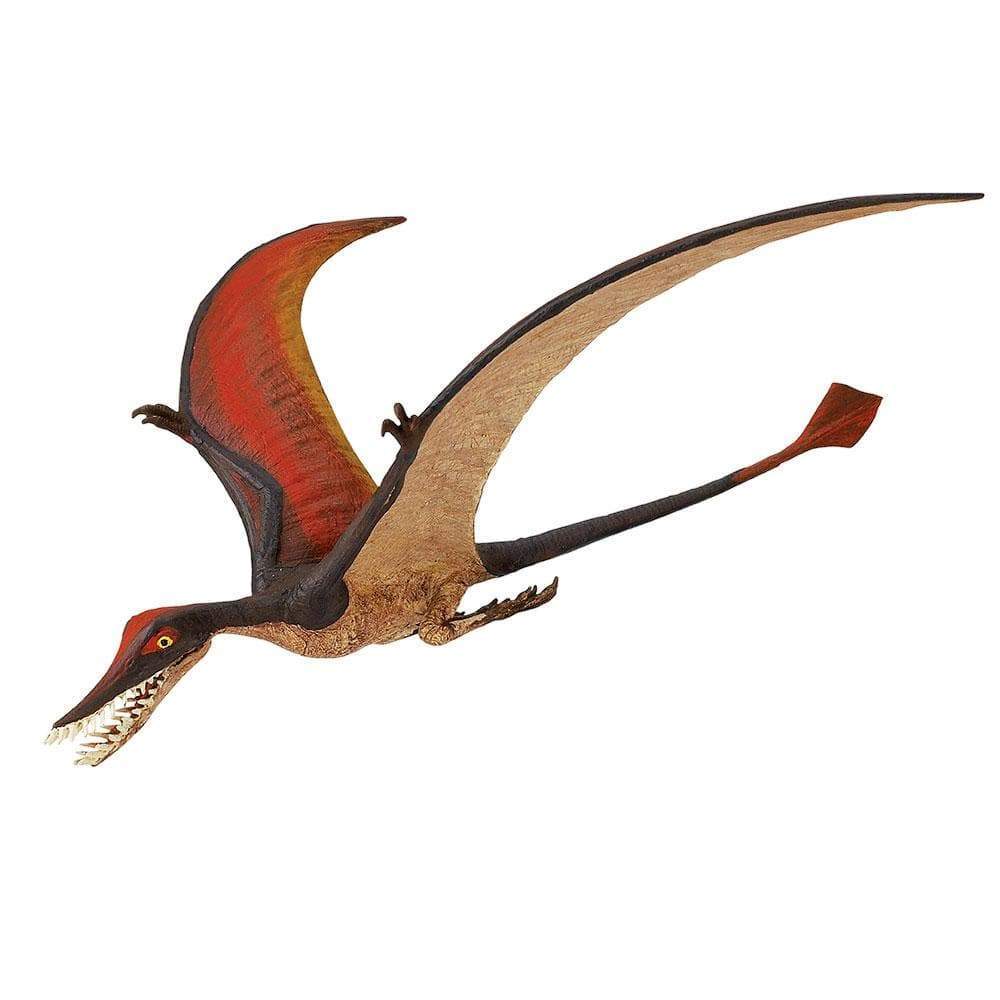Rhamphorhynchus is a genus of pterodactyloid pterosaur from the Late Jurassic period, with specimens dating to 155-150 million years ago. The name Rhamphorhynchus means “beak snout”, and is derived from the Greek rhamphos (ραμφος) meaning “beak” or “snout”, and rhynchos (ρυνχος) meaning “nose”. It was coined in 1885 by German paleontologist Christian von Meyer.
The type species, R. muensteri, was first described in 1846 by German anatomist and zoologist Peter Wilhelm Döderlein. It is known from a single specimen, consisting of an incomplete skeleton with some soft tissue preservation, found near Solnhofen in Bavaria, Germany. A second species, R. longiceps, was described in 2002 from fossils found in England; it is distinguished from R. muensteri by its longer neck and skull.
Rhamphorhynchus had a wingspan of up to 2 meters (6 ft 7 in), making it one of the largest pterosaurs known. It was a lightly built animal with long limbs and fingers adapted for grasping prey items such as insects and small reptiles. The tail was stiffened by numerous bony rods (known as chevrons) which helped to support the wing membrane during flight; these are more prominent in juveniles than adults. The skull was long and slender with sharp teeth adapted for slicing through flesh; the beak was toothless but had a strong hooked tip which may have been used for puncturing prey items or breaking open eggshells.
The body of Rhamphorhynchus was covered in fur-like pycnofibers which provided insulation against the cold air at high altitudes; these are thought to have given rise to the popular image of “pterodactyls” as flying dinosaurs wrapped in shaggy cloaks! The function of the large crest on its head is not certain but it may have been used for display purposes or thermoregulation; similarly, the purpose of the small horns present on some specimens is unclear but they may also be related to sexual selection or mate choice.
Rutgers University professor Kenneth Lacovara discovered what he believes is evidence that this creature did not fly but glided: “This animal didn’t flap its wings like bats or birds do — rather it soared through prehistoric skies using updrafts much like modern hang gliders do.”


